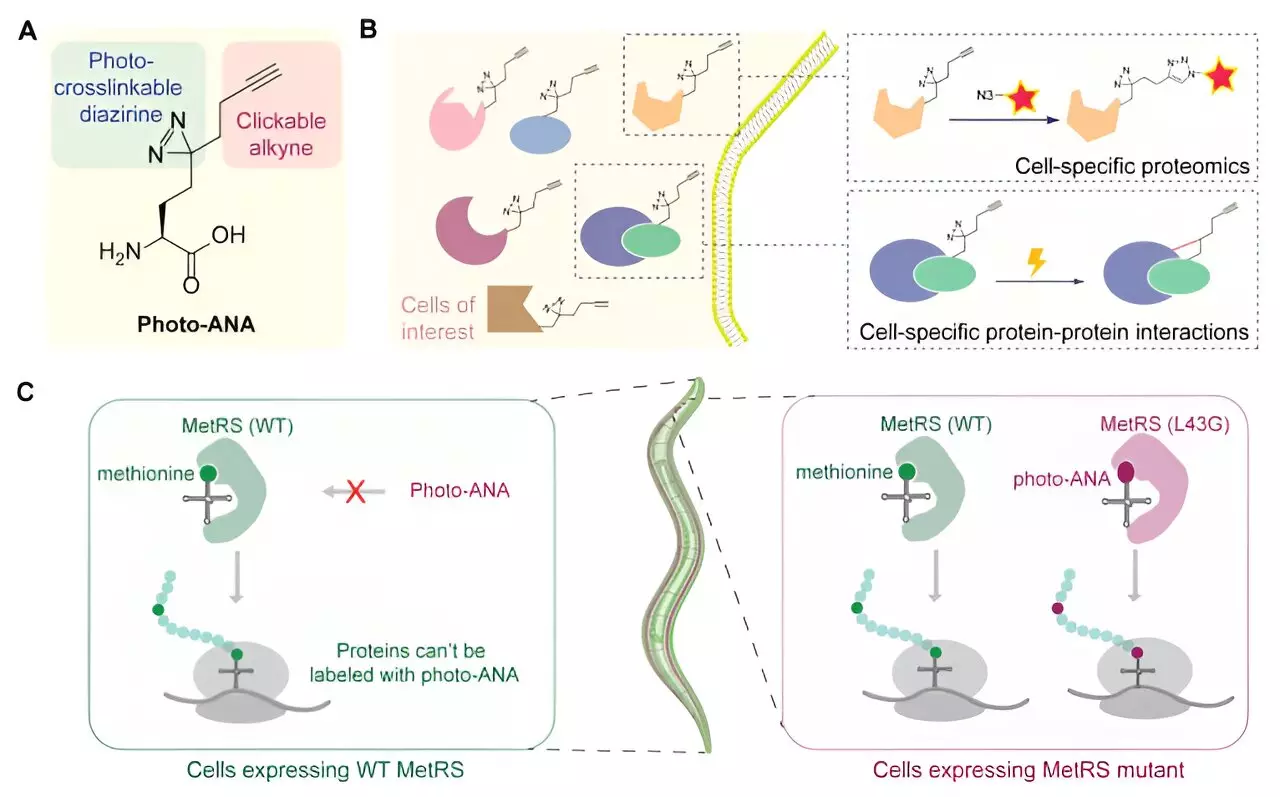The study of protein interactions within cells is crucial in understanding the complexity of multicellular organisms. Proteins play a vital role in carrying out specific functions within cells and coordinating with each other to form intricate molecular machinery. However, current methods often lack the cellular context in which these interactions take place. Researchers at The University of Hong Kong recently developed a novel chemical biology approach to address this gap, enabling a more in-depth investigation of tissue-specific protein-protein interactions.
The method, known as Methionine Analog-based Cell-Specific Proteomics and Interactomics (MACSPI), involves labeling proteins from specific cells with a bifunctional amino acid probe. This probe allows for the isolation and capture of protein-protein interactions through photo-crosslinking. By utilizing this innovative technique, the research team was able to identify numerous new tissue-specific proteins and interactions, providing valuable insights into cellular functions within living organisms.
The researchers designed and synthesized an unnatural amino acid, photo-ANA, which structurally resembles methionine but contains additional components. These components include an alkyne group for protein extraction and purification, as well as a diazirine group that, when activated by light, forms stable covalent linkages between the labeled proteins and their interacting molecules. By engineering an enzyme to incorporate the unnatural amino acid into proteins during synthesis, the team was able to selectively label proteins in specific tissues and capture protein complexes through light-induced crosslinking.
As a proof-of-concept, the researchers applied the MACSPI method to profile proteins from muscle cells and neurons in the model organism C. elegans. They discovered numerous novel tissue-specific proteins and investigated tissue-specific interactions involving a ubiquitously expressed protein, HSP90. The study revealed distinct sets of HSP90 interactors in muscles and neurons, shedding light on their unique regulatory roles in different biological processes.
The development of MACSPI opens up new possibilities for studying protein-protein interactions with spatial and temporal specificity in various multicellular organisms. This innovative approach has the potential to advance a wide range of biological and biomedical research projects, allowing researchers to delve deeper into the molecular mechanisms underlying complex biological processes. By understanding how proteins interact at the cellular level, scientists can gain invaluable insights into disease pathogenesis and potentially identify new therapeutic targets.
The collaborative efforts of the research team at The University of Hong Kong have significantly contributed to the field of cell-specific proteomics and interactomics. Their novel approach offers a promising avenue for unraveling the intricate network of protein interactions within tissues, providing a more comprehensive understanding of cellular functions in living organisms. As technology continues to advance, we can expect further breakthroughs in biological research facilitated by innovative methods like MACSPI.


Leave a Reply